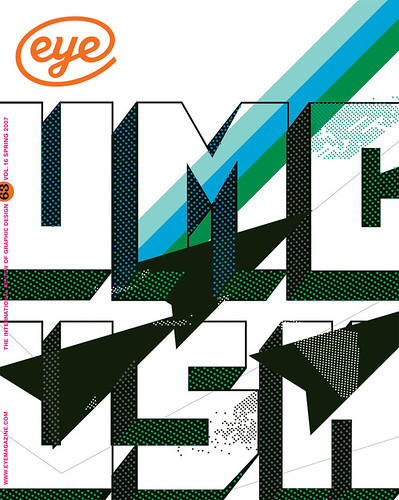Spring 2007
Chronicles Of Design Past And Present
Typography and Graphic Design: From Antiquity to the Present
By Roxane Jubert.<br>Flammarion, USD75/£47.50For more than twenty years Philip B. Meggs’s A History of Graphic Design, the first umbrella graphic design history, has been the standard textbook, at least in the United States, and Richard Hollis’s Graphic Design: A Concise History, has been a compact alternative. Supplemented by many thematic histories, as well as a slew of monographs on leading form-givers, it would appear that graphic design history has more than enough chronicles for educational purposes.
What need could there be for another omnibus textbook? That was my question when I received this book, which covers the same territory as the latest edition of Meggs’ book – now titled Meggs’ History of Graphic Design (Wiley, 2006).
On the surface this seems like the duplication of considerable effort, but Ms Jubert’s volume veers from Meggs’s taxonomies in significant ways, and more importantly, as pointed out in the foreword, ‘In France . . . the few works published on the subject, including dictionaries, are translations’. Therefore, for a French audience this book is an integral addition to graphic design scholarship. Yet since Typography and Graphic Design has been translated into English, it needs to be compared to extant English language books. For purposes here, I use Meggs as the touchstone.
To begin with, both Meggs and Jubert focus almost exclusively on Western accomplishments, and while Japan is covered, most other non-Western countries are not. Both begin their surveys with cave paintings and follow with a summary of the invention of writing. Each nimbly treks through the Middle Ages, the Renaissance and Mr Gutenberg’s great achievement. Jumping to the late nineteenth century, both cover Arts & Crafts by reproducing the cover for Wren’s City Churches and Morris’s Work of Geoffrey Chaucer.
Meggs’s table of contents is sparer than Jubert’s, which lists many more macro sub-categories under larger thematic umbrellas, yet the basic overview is the same. Nonetheless there are key differences in organisational (and philosophical) emphasis. Meggs gives more space to the inextricable influence of photography on design from the nineteenth and twentieth centuries than does Jubert. He further devotes an entire chapter to ‘The New York School’, which rightly segues into a section on the rise of conceptual editorial and advertising art direction in New York City. The more Eurocentric Jubert collapses elements of this same history into a homogenous chapter titled ‘Creativity and Trends Country by Country’, which, I believe, mistakenly subordinates Push Pin Studios and psychedelia, while discussing them along with Polish, Swiss and French ‘eclectic’ accomplishments, which appear chronologically out of place. In this sense, Meggs’s approach flows more logically. But Jubert provides two chapters on issues that Meggs glosses over: the impact of the First World War on propaganda and advertising, and the effects of totalitarian design on Modernism.
Jubert’s brief but astute overview of Nazi (and Italian Fascist) dictums on design even goes further than that covered in Jeremy Aynsley’s Graphic Design in Germany: 1890-1945. And while Meggs devotes a spread to John Heartfield and anti-Nazi publishing, and then later covers the Second World War years, the latter is primarily in terms of Modernism in American war propaganda and corporate communications. I’ve always felt he left a big gap – which Jubert now fills. Her analysis of Nazi designer Hans Vitus Vierthaler’s poster for the 1936 anti-Modernist Degenerate Art Show, sarcastically designed in the style of
El Lissitsky, is particularly enjoyable.
Both books have their unique attributes, but students need only one textbook. How to decide? Let me start by saying many of Meggs’s initial kinks have been ironed out since 1983. The design is more readable and all reproductions are finally in colour, with the printing quality far better than before. Both texts flow well, although Jubert’s English translation is unnecessarily wordy. Both use a liberal number of illustrations, though Jubert’s are not always keyed to texts (as are Meggs’s). Overall, the Meggs format is, for me, more accessible in its use of two columns per page, compared with Jubert’s single wide one; and Meggs uses running heads picking up the subheads within a chapter, whereas Jubert does not, making her book harder to speedily navigate.
To recommend one textbook is more difficult than I would have thought. Jubert’s book is a superb addition to French design pedagogy, so there is no question what is best for French-speaking students. But for my own classes, I will stick with Meggs as a primary textbook,
at least for now.
Steven Heller, design writer, New York
First published in Eye no. 63 vol. 16 2007
Eye is the world’s most beautiful and collectable graphic design journal, published quarterly for professional designers, students and anyone interested in critical, informed writing about graphic design and visual culture. It is available from all good design bookshops and online at the Eye shop, where you can buy subscriptions and single issues.

